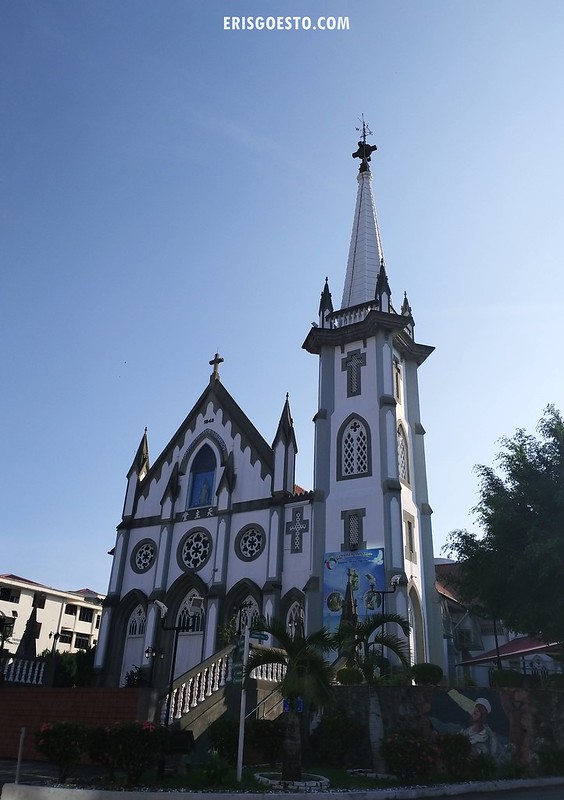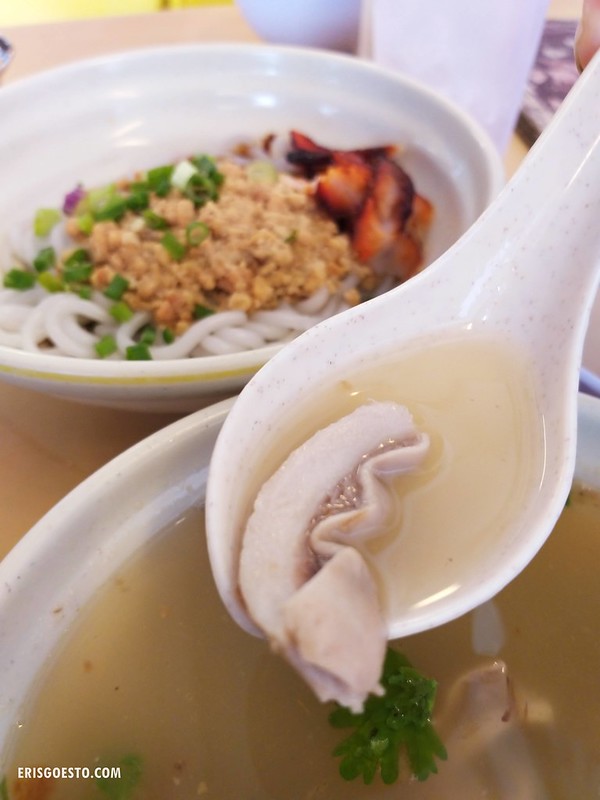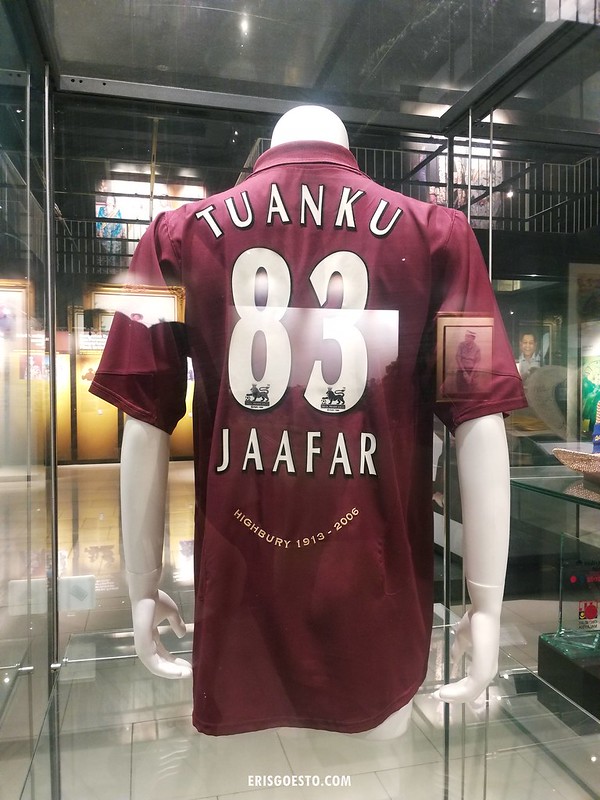AS one of only four state capitals in Malaysia that have yet to achieve city status, Seremban in the Southwestern Malaysian state of Negeri Sembilan is an interesting place: at once busy but idyllic; modern but with old world charm. It was founded in the early 19th century as Sungei Ujong, and its tin mining riches attracted many Malay farmers, Arab traders, as well as Chinese miners to the area. Later on, the British would establish their presence here. This hodgepodge of cultures can be seen even today, such as in the architecture of its buildings, the unique flavours of its cuisine, and the rich and varied traditions and cultural practices, some of which are still practiced to this day.
Seremban is just an hour and a half from KL, making it perfect for day tripping. If you’re planning one, here’s an itinerary that you can follow to get in all (or most) of the sights in, as well as helpful tips on how to make the most of your time. I hope you find it useful!
8AM: Pasar Besar Seremban
Wet markets are a great place to get a feel for the local way of life – and there’s no better place to do that than at Pasar Besar Seremban, one of the most recognisable landmarks in town. The architecture is reminiscent of the good ol’ 1970s (when it was opened) – brutalist; industrial-like, with a squarish layout that reminds one of the buildings in the Soviet Union, where the style was most popular. Part of the upper floor was burned down in a fire in 2017, which has since been restored, but many of the food vendors are still camped out at the front of the market underneath makeshift tents.
The market’s neat, grid-like layout is divided into sections for vegetables, poultry and seafood, with another area for dry goods. If you’re here for shopping, it’s best to come early so you can have your pick of the best and freshest produce.
Indoor vegetable corner
Stall selling dry goods, herbs and spices in sacks. For urban millennials (like me, lol) who are used to doing their shopping in malls, come visit the market for a change! I guarantee you’ll ooh and aahh at all the things you can never find in a regular grocery store.
When you’ve had your fill of exploring (or shopping) at the market, adjourn to the front for breakfast, where there are about a dozen food stalls operating under makeshift tents. Originally, the food stalls were located on the first floor of the building, but they had to move because of the fire, and the premises weren’t ready yet during our visit. A must have is the local specialty – Meehoon Sotong – fried vermicelli doused in a gravy and topped with slices of pork and cuttlefish.
Another very popular dish to have in the market is the Beef Noodles from Stall 748 – although in my honest opinion, this was rather overrated. Tried the dry version which came topped with preserved vegetables and peanuts. The gravy was way too starchy and thick, and it might be my taste buds but I didn’t like the combination of flavours at all. Perhaps one would fare better with the soup version.
9AM: CHURCH OF THE VISITATION
A short drive from the market is the Church of The Visitation. Founded in 1848 by French missionaries from Melaka, it is one of the oldest in Seremban. What started off as an ‘attap’ chapel has become an impressive building with beautiful Neo-Gothic architecture. Unfortunately since it was a weekday, the church was not open for ahem.. visitations. You can still stop by to take photos of the facade, though. I especially like the weather vane at the top of the spire.
Pretty colonial architecture in town. Also I just realised the billboard placement looks as if there are people peeking over the top lol.
10 AM: THEN TZE KHOON TEMPLE (CENTIPEDE TEMPLE)
Undoubtedly one of Seremban’s top attractions, the 150-year-old Then Tze Khoon temple, otherwise known as the Centipede Temple, is shrouded in myth and legend. Built on Bukit Jung, the stories go that the hill, which resembles the shape of a large ship, was actually once a real ship, navigated by a young man. The man had gone out to seek riches and fame, leaving his poor mother behind.
When he returned a wealthy and powerful man, he was not filial to his mother, casting her aside. Angered, the gods punished the man to become a rock ship, never to sail from the spot. It is said that a large centipede would often appear next to this rock, leading the locals to believe that the insect was a reincarnation of the man’s mother. The belief today is that if you see a centipede at the temple, it will bring you good fortune.
The main shrine, dedicated to the Taoist deity Then Tze, part of it built into the rock ‘ship’.
The other story of how the temple came to be is that the hill was once filled with all manner of wild beasts and dangerous animals, so the locals asked Then Tze (coz he had a rep for vanquishing evil) to provide them with protection. Then Tze gave them a sign and they found some joss sticks at the hill, indicating they should build a temple on the site.
While hiking your way to the top, you will pass by this small shrine with a pair of Malay-looking statues, complete with songkok and sarong. These are the Datuk Gong (Literally Grandfather ‘lord’ – a title in Chinese used to denote respect or someone elderly), aka local deities or spirits. Praying to Datuk Gong is a Chinese folk practice in places such as Malaysia, Indonesia, Brunei and southern Thailand.
It is said that when the Chinese immigrated here in the 18th to 19th centuries, they brought with them the culture of folk worship – praying to local deities and real historical figures for protection. Back then, many Malays still practiced a brand of Islam with animism (pagan beliefs), praying to local spirits, and when the Chinese came, they incorporated this into their own culture – hence Datuk Gong.
This shrine at the Centipede Temple is guarded by a pair, and you can see the songkok and tongkat offerings on the rock behind the shrine. Its just fascinating to see the assimilation of cultures – a rich and colourful shared heritage.
Being a Taoist temple, one can expect to find figures of various Taoist deities here, including the 8 Immortals, Yue Lao (the god of marriage) and Guan Yu, the ancient Chinese general revered as a god of protection.
Guan Yu’s pavilion is one of the most scenic and picture-worthy spots in the temple, with a view overlooking the entire Seremban town. The shrine is beautifully endowed with traditional elements, with curving roofs topped with dragons, intricate cloud patterns on its beams and stone dragons wrapped around its pillars. Surrounded by the hill’s lush greenery, it provides a tranquil atmosphere for meditation and relaxation.
Did you know? Guan Yu was a real-life general who lived in the third century, during the time of the Three Kingdoms (of which the Romance of the Three Kingdoms was based on) and was revered for his loyalty and righteousness. Today, Guan Yu is a popular figure in many East Asian cultures. Fun tidbit: In places such as Hong Kong and other parts of China, he is worshipped by both the police force, and the triads.
View from the Guan Yu Pavilion.
Goddess of Mercy Pavilion
Pond stocked with fat koi fish
A large centipede statue at the top of the hill. Unfortunately we did not come across any centipedes during our visit.
11 AM: SEREMBAN STATE MUSEUM AND CULTURAL COMPLEX
Seremban, like most of Negeri Sembilan, is home to a large Minangkabau diaspora. The Minangs, who are originally from the highlands of Sumatra, have a unique culture, most notably in their architecture, which features sharp roof spires similar to that of the horns of a buffalo. The Seremban State Museum and Cultural Complex is a prime example of this. The inside houses a small but interesting collection of exhibits relating to the state’s history as well as culture. Unfortunately the upper floors were not open during our visit, but the air conditioned interiors are a good place to chill out in and escape the heat. Entrance is free.
Pottery and utensils on display inside the museum. There was also a section detailing the Minangs and their unique culture, which is matrilineal. Which means that the womenfolk call the shots when it comes to inheritance, with homes, land and property passing down from mother to daughter. Some of the practices may not be followed so strictly in the Malaysian Minang community, but in the highlands of Sumatra, husbands still move into their wives homes when couples get married, and decisions are made collectively between men and women.
Within the museum grounds, visitors will also find two wooden houses – one a replica of a traditional Negeri Sembilan house, and another a wedding gift from the 5th ruler of the state to his daughter. Both are built without the use of nails, but instead use the stacking of timber frames to put the building together – an impressive feat of architecture and building in its day.
Khat detailing
1 PM: LUNCH TIME! @ YI POH
Known for its Hakka Mee and Lou Shi Fun, Yi Poh is an institution in town, where many locals flock to for breakfast and lunch. The Lou shi fun served here is similar to lai fun, which is long, slightly transculent and chewy, rather than shaped like a rat’s tail as is common in KL.
Honest opinion? The Hakka Noodles are decent, but nothing great.
Fried mushroom snacks. Needed more flavour, but portions were generous.
What I actually enjoyed here was the peppery pork stomach soup. Innards were prepared well and tasted clean, with a nice, chewy texture. If only the weather wasn’t so hot, lol.
YI POH
26A, Ground Floor, Jalan Seng Meng Lee, 70200 Seremban, Negeri Sembilan (opens 7.30AM – 5.30PM, closed Mondays)
2PM: SIEW BAO TIME
One cannot simply go to Seremban and not get their famous siew bao aka oven baked pork/chicken buns. Just across the road from Yi Poh is Kedai Siew Pau Asia, where the flaky meat-filled pastries sell like hotcakes (pardon the pun). You can even watch the bakers in action, like this lady here who expertly applies egg yolk onto the buns to get that lustrous shine, before popping them into the industrial ovens by the trays.
Aside from siew bao, the shop sells a variety of other biscuits, breads and pastries, all reasonably priced. They are also famous for egg tarts.
KEDAI SIEW PAU ASIA
368, Jalan Seng Meng Lee, Taman Unian, 70200 Seremban, Negeri Sembilan (open daily: 8 AM – 6.30 PM)
2.30PM – RIDING A BLACK CHOCOBO OSTRICHES AT JELITA OSTRICH FARM
Jelita Ostrich Farm has been around for quite a long time – I remember coming here when I was in high school. Tucked within the grounds of the Negeri Sembilan Veterinary Department, you have to drive aways in to the farm, where you pay an entrance fee of RM 10. A handler will bring you on a tour of the premises, where the ostriches roam around in grassy paddocks. You can also buy a packet of corn to feed them over the fence.
Fun fact: Male ostriches have luxurious black plumage, while the females are grey. They can tower up to three metres in height, making them the world’s largest flightless birds. The birds here are imported from South Africa. The oldest is one affectionately called ‘Orang Tua’ (old man), a 60-year-old half blind bird with sparse feathers. We tried feeding it but because it couldn’t see properly the corn ended up being scattered all over the place.
The handlers will take you to a paddock where you can ride one of the males (the bird is blindfolded so they don’t run off and cause an accident). If you’re not up to the excitement, you can watch the handlers race the birds on a short track (ostriches can clock in at speeds of up to 70 kilometres/hour).
While you’re walking around the grounds, you might be accompanied by these sweet long-eared goats (I like to call them Djali goats, after the character in The Hunchback of Notre Dame). They seem very used to human presence and will frolic beside you as you move from station to station, playfully nuzzling against your hands for a pet or treat.
The tour will not take more than an hour, and you can also stop at their souvenir shop to buy some ostrich-based products, including feathers, soaps and creams. They give you a certificate at the end of it proclaiming you are now a certified ostrich rider lol.
3.30PM – TUANKU JAAFAR ROYAL GALLERY
Feeling the afternoon lull? Escape the heat at the Tuanku Jaafar Royal Gallery, which was opened several years ago, dedicated to the 10th Yang di-Pertuan Agong, the Yang di-Pertua Negeri Sembilan, Tuanku Jaafar. The three-storey building houses various exhibits chronicling the king’s life, as well as several displays relating to Negeri Sembilan history. There is an entry fee of RM10, which is rather steep imo.
Tuanku Jaafar was multi-talented. Apart from being an avid sportsman who played golf and cricket, he could also paint quite well. The above is one of his works.
Gallery with some of the Tuanku’s personal effects. Do check out his extensive collection of golf clubs! There’s also a mini putting green where you can try your hand at knocking a golf ball into the hole.
A replica of the royal dais.
Replica of a traditional Rumah Gadang (home of the Minangkabau) from Sumatra.
5PM : CHILL AT ULU BENDUL RECREATIONAL PARK
Take a 20-minute drive out of town to the nearby area of Ulu Bendul, which is home to a recreational park at the foot of Gunung Angsi. Seasoned hikers will know the place, as it is a popular trail for hiking, but for the rest of the unfit population, taking a nice dip in the cool stream is also very refreshing. If you’re not up to clambering over the rocks littering the stream bed, there’s a dedicated pool at the bottom, complete with gazebos. There are also picnic and shower facilities.
Great place to unwind if you love greenery. Surprisingly, I was not bitten by mosquitoes.
You might come across friendly cattos hanging around the food court area. I suggest petting.
7 PM : DINNER
Before leaving town, stop by at Seremban Gateway, which has several restaurants and shops to explore, including a largish bookshop, a spa and a karaoke centre.
Have a fruitful trip to Seremban!














































Totally enjoyed reading it!
LikeLiked by 1 person
Thank you! Hope you find this guide useful if you’re ever visiting!
LikeLiked by 1 person
Sure!
LikeLiked by 1 person